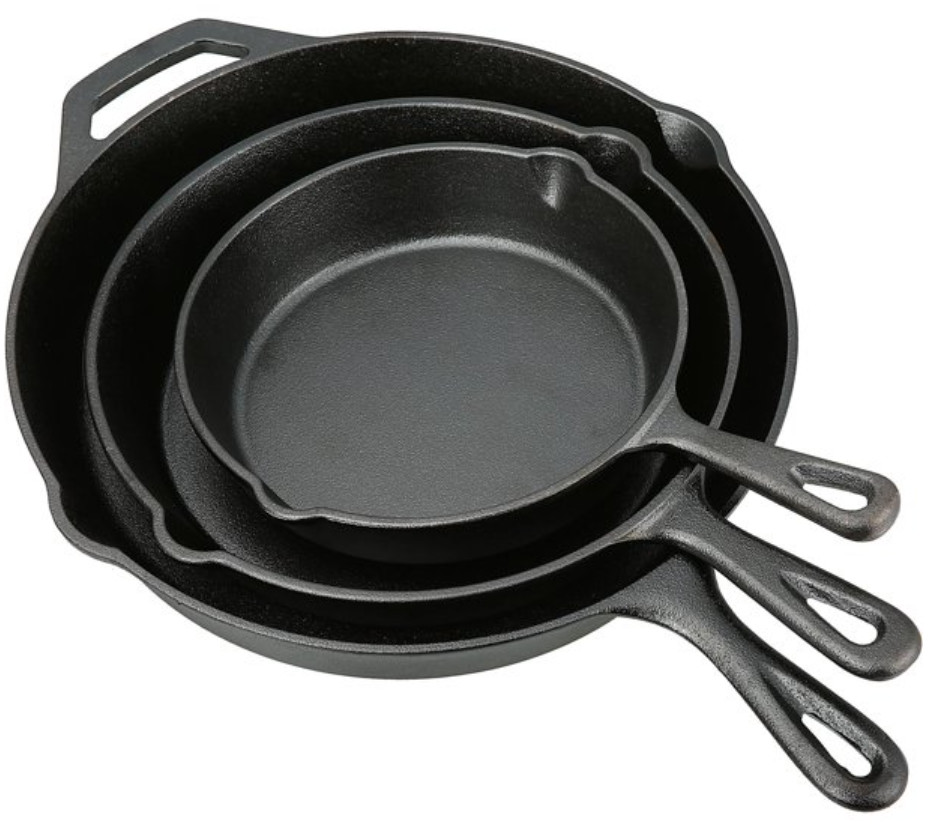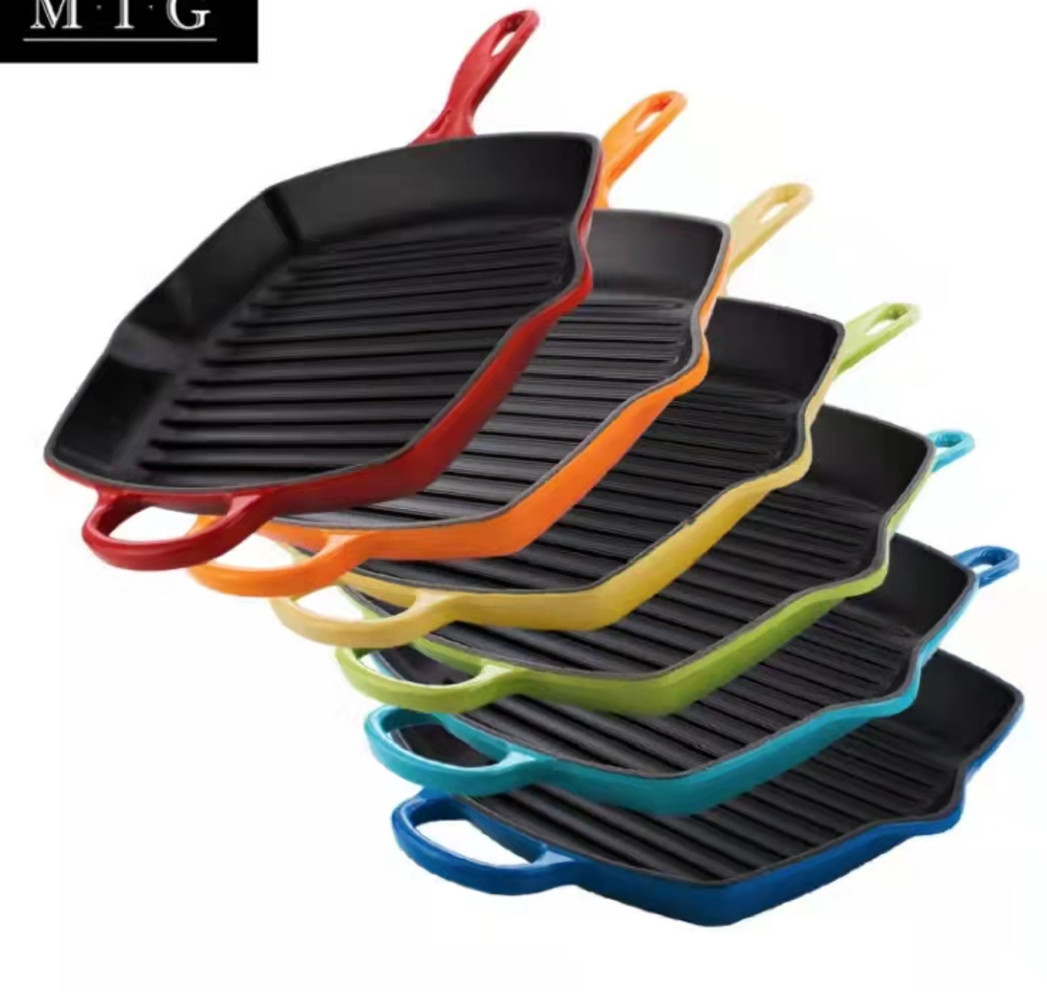- 150m Ni Guusu, Oorun DingWei opopona, Nanlou Village, Changan Town, GaoCheng Area, Shijiazhuang, Hebei, China
- monica@foundryasia.com
Jun. Oṣu Karun Ọjọ 12, Ọdun 2023 18:48 Pada si akojọ
OHUN ti wa ni simẹnti irin kukisi
Ohun ti o jẹ simẹnti irin cookware:
Simẹnti irin cookware jẹ eru-ojuse cookware eyi ti o ti ṣe ti simẹnti irin ni iye fun ooru idaduro, agbara, agbara lati ṣee lo ni gidigidi ga awọn iwọn otutu, ati ti kii-stick sise nigba ti akoko daradara.
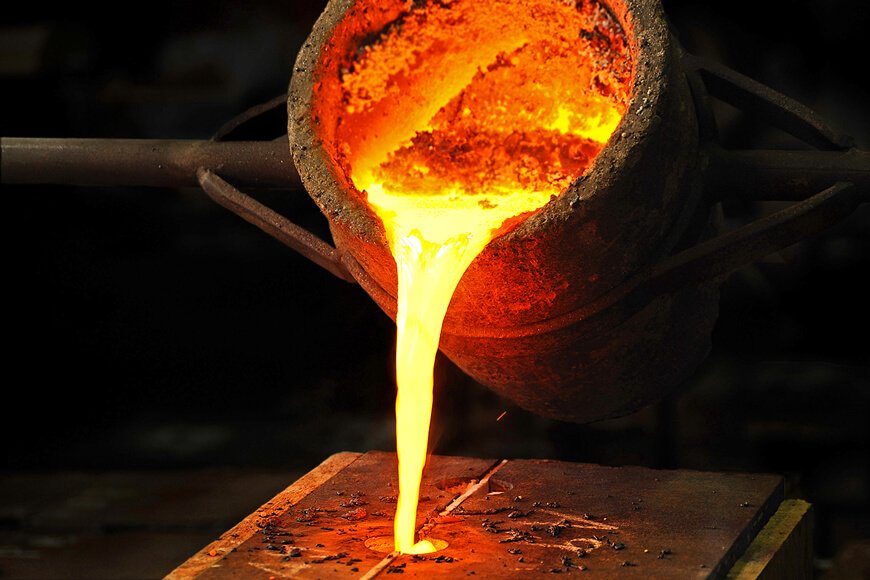
Itan ti simẹnti irin cookware
In Asia, particularly China, India, Korea and Japan, there is a long history of cooking with cast iron vessels. The first mention of a cast-iron kettle in English appeared in 679 or 680, though this wasn't the first use of metal vessels for cooking. The term pot came into use in 1180. Both terms referred to a vessel capable of withstanding the direct heat of a fire. Cast-iron cauldrons and cooking pots were valued as kitchen items for their durability and their ability to retain heat evenly, thus improving the quality of cooked meals.
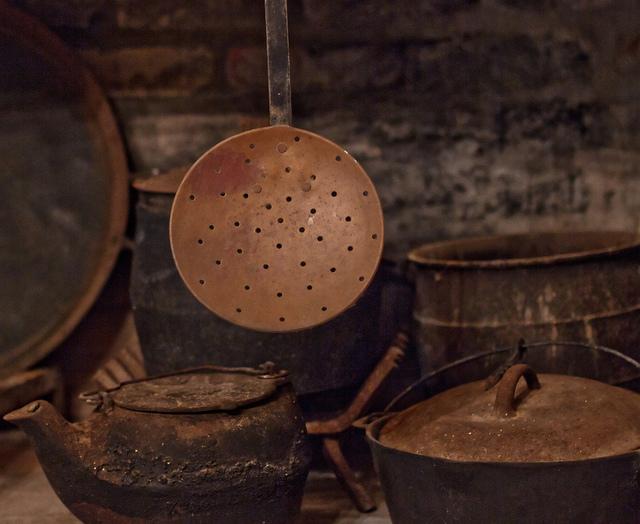
Ní Yúróòpù àti Orílẹ̀-Èdè Amẹ́ríkà, kí wọ́n tó bẹ̀rẹ̀ sí í dáná sítóòfù ní àárín ọ̀rúndún kọkàndínlógún, wọ́n máa ń jẹ oúnjẹ nínú ilé ìgbọ̀nsẹ̀ kan, wọ́n sì máa ń ṣe àwọn ìkòkò àti ìgò tí wọ́n fi ń dáná sí i, tàbí kí wọ́n dádúró nínú rẹ̀.
Cast-iron pots were made with handles to allow them to be hung over a fire, or with legs so that they could stand in the coals. In addition to Dutch ovens with three or four feet, which Abraham Darby I secured a patent in 1708 to produce, a commonly used cast-iron cooking pan called a spider had a handle and three legs allowing it to stand upright over campfires as well as in the coals and ashes of a fireplace.
Awọn ikoko sise ati awọn pan pẹlu ẹsẹ ti ko ni ẹsẹ, ti o pẹlẹ ti wa ni lilo nigbati awọn adiro sise di olokiki; asiko yi ti awọn pẹ 19th orundun ri awọn ifihan ti alapin
cast-iron skillet.
Awọn ohun elo idana simẹnti jẹ olokiki paapaa laarin awọn onile ni idaji akọkọ ti ọrundun 20th. O je kan poku, sibẹsibẹ ti o tọ cookware. Pupọ julọ awọn idile Amẹrika ni o kere ju ọpọn-irin simẹnti kan.
Ọ̀rúndún ogún náà tún rí ìfarahàn àti ìgbòkègbodò ti enamel tí a bo ohun èlò tí a fi ń ṣe símẹ́ǹtì-irin.
Today, of the large selection of cookware that can be purchased from kitchen suppliers, cast iron comprises only a small fraction. However, the durability and reliability of cast iron as a cooking tool has ensured its survival. Cast-iron pots and pans from the 19th and 20th century continue to see daily use to the present day. They are also highly sought after by antique collectors and dealers. Cast iron has also seen a resurgence of its popularity in specialty markets. Through cooking shows, celebrity chefs have brought renewed attention to traditional cooking methods, especially the use of cast iron.
Awọn ọja pataki
Orisi ti simẹnti irin cookware pẹlu didin pans, Dutch ovens, griddles, waffles Irons, panini tẹ, jin fryers, woks, fondu ati potjies.
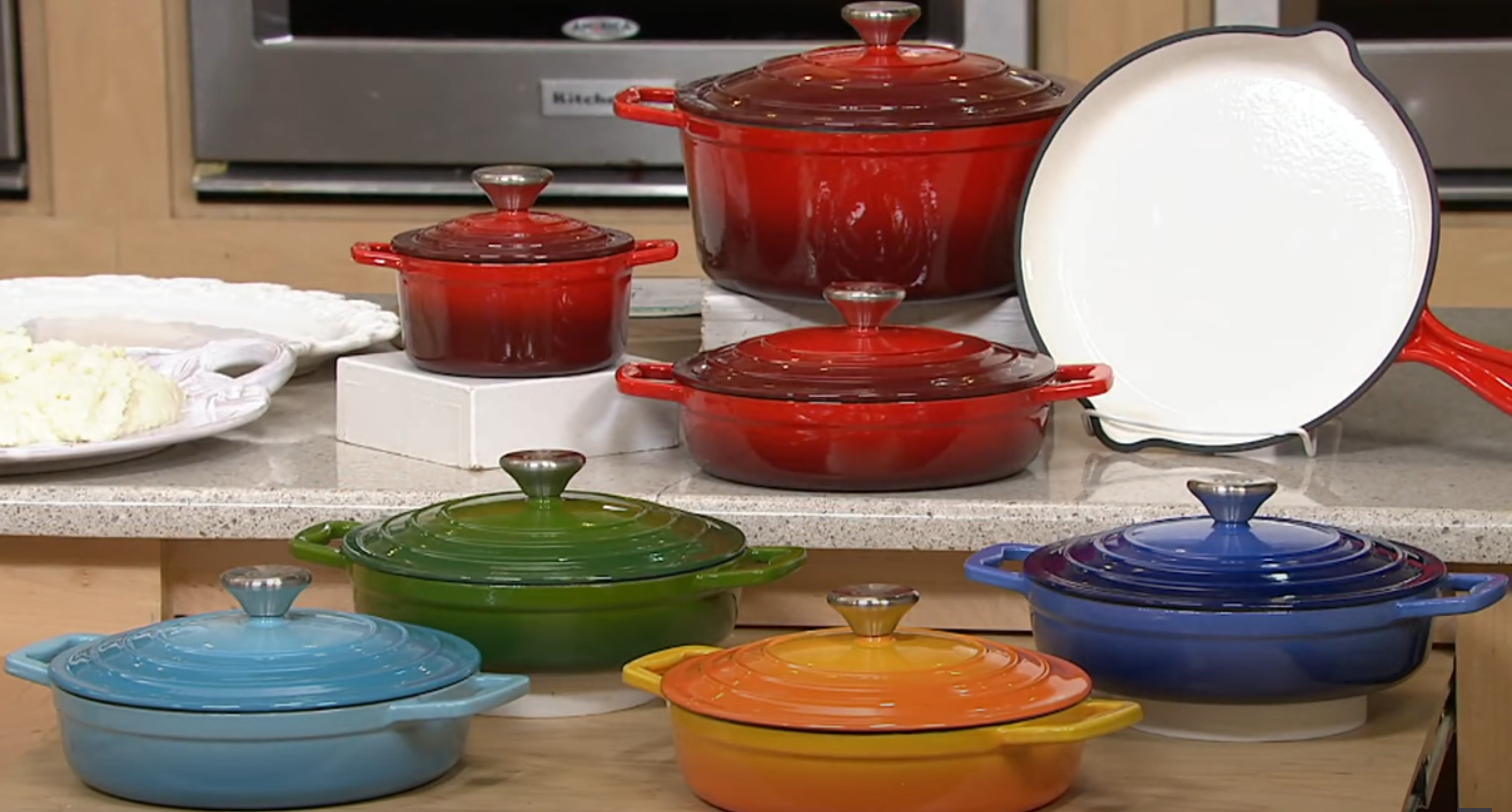
Awọn anfani ti simẹnti irin cookware
Cast iron's ability to withstand and maintain very high cooking temperatures makes it a common choice for searing or frying, and its excellent heat retention makes it a good option for long-cooking stews or braised dishes.
Because cast-iron skillets can develop a "non-stick" surface when cared for properly, they are excellent for frying potatoes or preparing stir-fries. Some cooks consider cast iron a good choice for egg dishes, while others feel the iron adds an off-flavor to eggs. Other uses of cast-iron pans include baking, for instance for making cornbread, cobblers and cakes.
Many recipes call for the use of a cast-iron skillet or pot, especially so that the dish can be initially seared or fried on the stovetop then transferred into the oven, pan and all, to finish baking. Likewise, cast-iron skillets can double as baking dishes. This differs from many other cooking pots, which have varying components that may be damaged by the excessive temperatures of 400 °F (204 °C) or more.
-
Product introduction of Changan Cast Iron Co., LTD
IroyinJan.24,2024
-
The Impact of the Leidenfrost Effect on Non-Stick Properties of Cast Iron Titanium Coated Cookware
IroyinJan.24,2024
-
Ṣiṣayẹwo Pipin Onjẹ-ounjẹ——Símẹnti Iron Casseroles vs Deede Casseroles
IroyinOṣu Kẹta 03, 2024
-
Idanileko Iṣakojọpọ Tunto pẹlu Shelving ati Ibi ipamọ 3D fun Awọn ọja
IroyinOṣu kejila 29,2023
-
Ninu ikoko enamel irin simẹnti ti a lo le ṣee ṣe ni imunadoko pẹlu awọn igbesẹ wọnyi:
IroyinOṣu kejila 27, 2023
-
Ilana Metallographic fun enamel lori irin simẹnti
IroyinOṣu kejila 27, 2023
